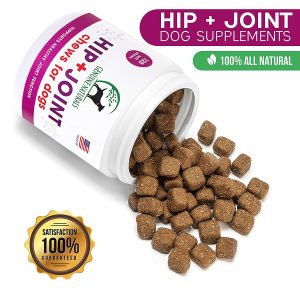
 Hip dysplasia is a deformity in the hip joint, in which the joint allows excessive movement in the hips of canine pets. This malformation in the dog’s hips can lead to several other complications such as degeneration of the joint, inflammation, or arthritis. Although it is largely caused by hereditary factors, other aspects which contribute to a dog’s hip dysplasia include excess body weight, rate of growth, trauma, and the environment.
Hip dysplasia is a deformity in the hip joint, in which the joint allows excessive movement in the hips of canine pets. This malformation in the dog’s hips can lead to several other complications such as degeneration of the joint, inflammation, or arthritis. Although it is largely caused by hereditary factors, other aspects which contribute to a dog’s hip dysplasia include excess body weight, rate of growth, trauma, and the environment.
 Many dog breeds are susceptible hip dysplasia. But according to board-certified veterinarian Dr. Anthony Cambridge, hip dysplasia is most common among Golden and Labrador Retrievers, German Shepherds, and the Rottweiler breed. If your dog belongs to such breeds, you can check to see if they have hip dysplasia by observing signs and symptoms.
Many dog breeds are susceptible hip dysplasia. But according to board-certified veterinarian Dr. Anthony Cambridge, hip dysplasia is most common among Golden and Labrador Retrievers, German Shepherds, and the Rottweiler breed. If your dog belongs to such breeds, you can check to see if they have hip dysplasia by observing signs and symptoms.
Signs of hip dysplasia may manifest in some kind of discomfort or pain observed in the dog. This discomfort may also lead to the dog’s reluctance to play, even as a puppy. Also, when your dog feels pain in its hind legs, it may suddenly change how it uses them such as in walking. It may limp slightly as it walks. Similarly, if your dog ‘bunny-hops’ up the stairs in an awkward manner, it could also mean that your canine friend is suffering from hip dysplasia.
If you think your dog is showing signs of hip dysplasia, immediately consult your veterinarian. Your vet may then recommend an examination and x-ray to diagnose if your dog does in fact suffer from hip dysplasia. The vet may then perform a laxity test on your dog’s hip joint.
To do this, the vet may have to sedate your dog to reduce its discomfort while performing the laxity test. The test involves pushing on the femur of the dog until the femoral head or ball joint rises out of the socket. Once the femoral head is out of the socket, it will pop back in with a click. The clicking sound is the determining factor that your dog is suffering from hip dysplasia, regardless of what may or may not be seen in the x-ray.
Unless you are a board-certified veterinarian, never administer this test on your own dog. Always consult with your veterinarian if you think your dog suffers from hip dysplasia. If your canine pal does suffer from it, ask your vet for the proper ways to treat your pet.




One thought on “Hip Dysplasia in Bulldogs”